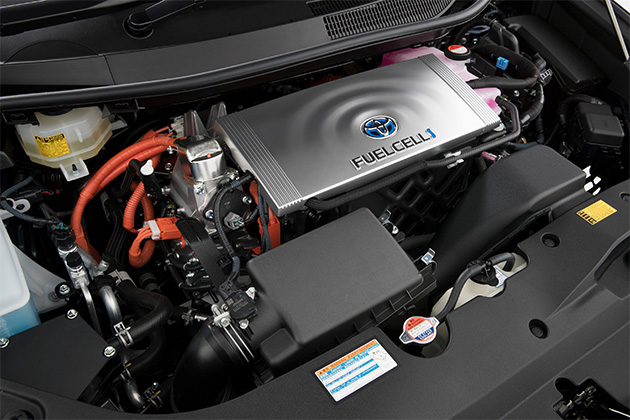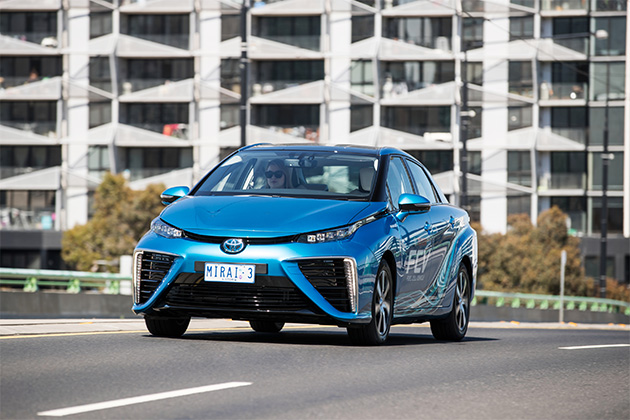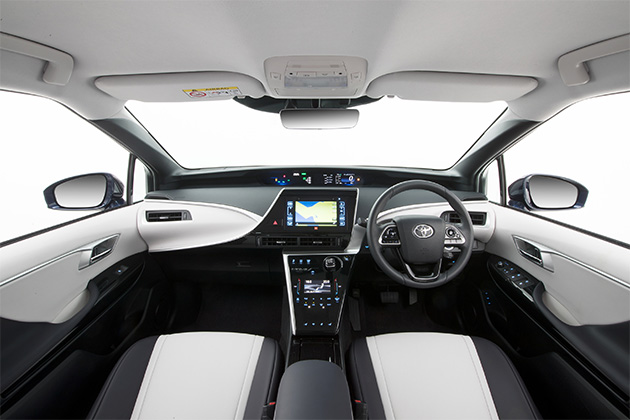20 January, 2018 By: Alex Forrest
Even though hydrogen is extremely flammable, hydrogen fuel-cell cars don’t burn hydrogen in an engine, and, of course, they don’t burn petrol or diesel either.
These vehicles also don’t need to be recharged with electricity from an external source and yet this one is powered by an electric motor.
So how does that work?
Toyota’s hydrogen fuel-cell car, the Mirai, stores hydrogen under very high pressure (70 megapascals or more than 10,000psi) in two tanks.

That hydrogen is fed into a fuel-cell stack, which is a device that can combine the hydrogen with oxygen from the ambient air to form a chemical reaction that produces electricity.
That electricity is then used to drive an electric motor, which, in turn, powers the vehicle.
However, to optimise its energy conservation, the Mirai utilises the same hybrid system developed for the Toyota Prius, with the exception being the regular hybrid’s petrol engine is replaced by the fuel-cell stack.
That means the Mirai also uses a battery, which can also store electricity generated by the fuel cell and the regenerative braking system and use it later to power the vehicle.

The drive system generates up to 110kW, and with both hydrogen tanks filled, a range of 550km is claimed. The tanks take about five minutes to fill and would cost about $60.
There’s an accelerator and a brake in the usual places and you drive it just like a regular automatic vehicle.
The Mirai’s interior is well finished, with some futuristic elements. The polished surfaces and soft-touch materials are what you might also expect in a premium small car.

It has been sold in Japan, the US and Europe since 2015, but has never been sold in Australia.
The one we drove was carried to WA by a large truck dedicated to the job of refuelling hydrogen cars, which Toyota calls its ‘mobile refueller’.
Toyota has said it will continue to work with governments, industry and other stakeholders in Australia to fast track the development of the refuelling infrastructure required to support the widespread sale of fuel-cell vehicles.
| Price driveaway (as tested): |
not available |
|---|---|
| Engine: | Electric |
| Power: | 110kW |
| Torque: | not disclosed |
| Claimed fuel economy: | Approx. 1kg H2/100km |
| ANCAP Rating: | not rated |
